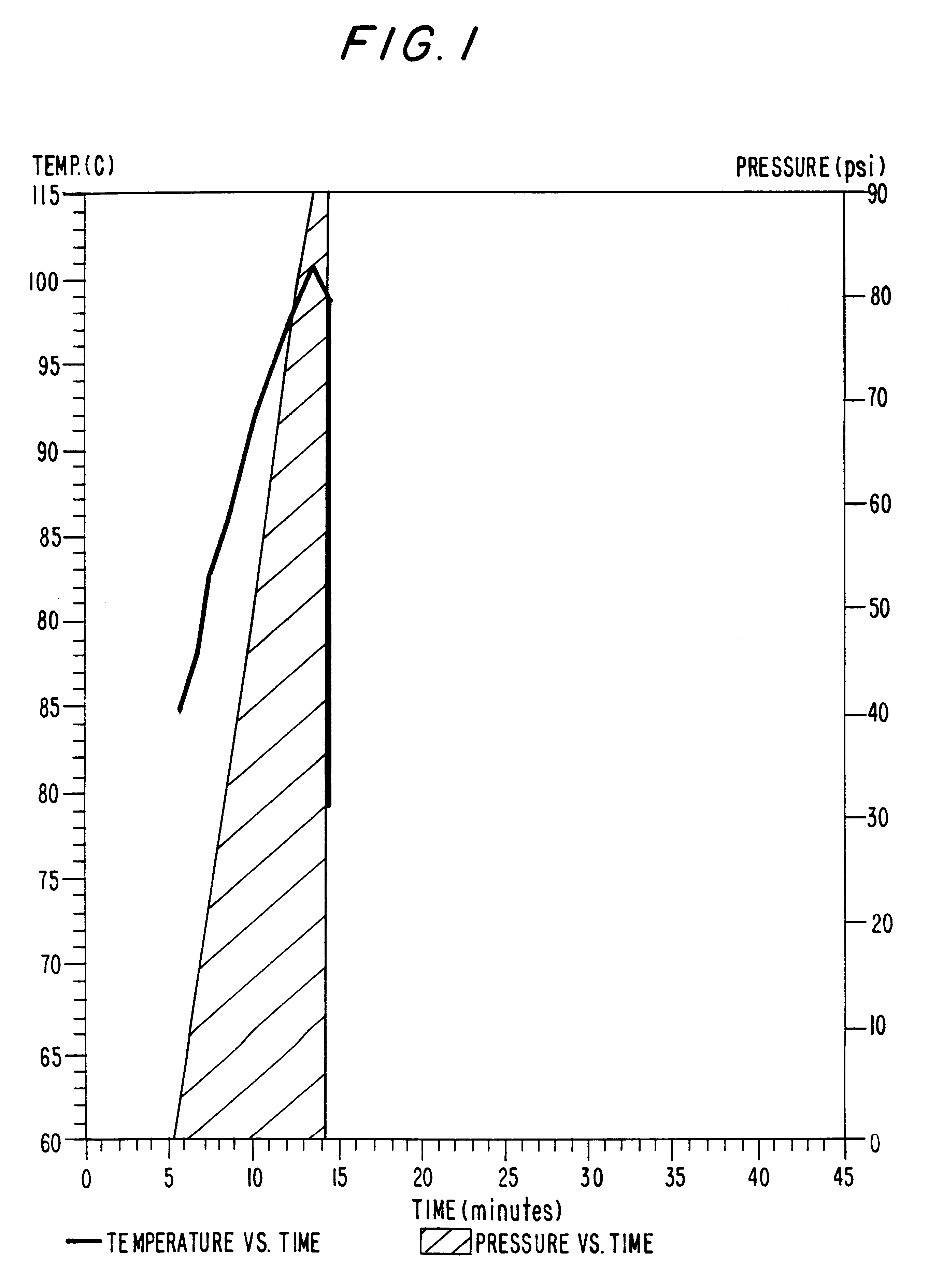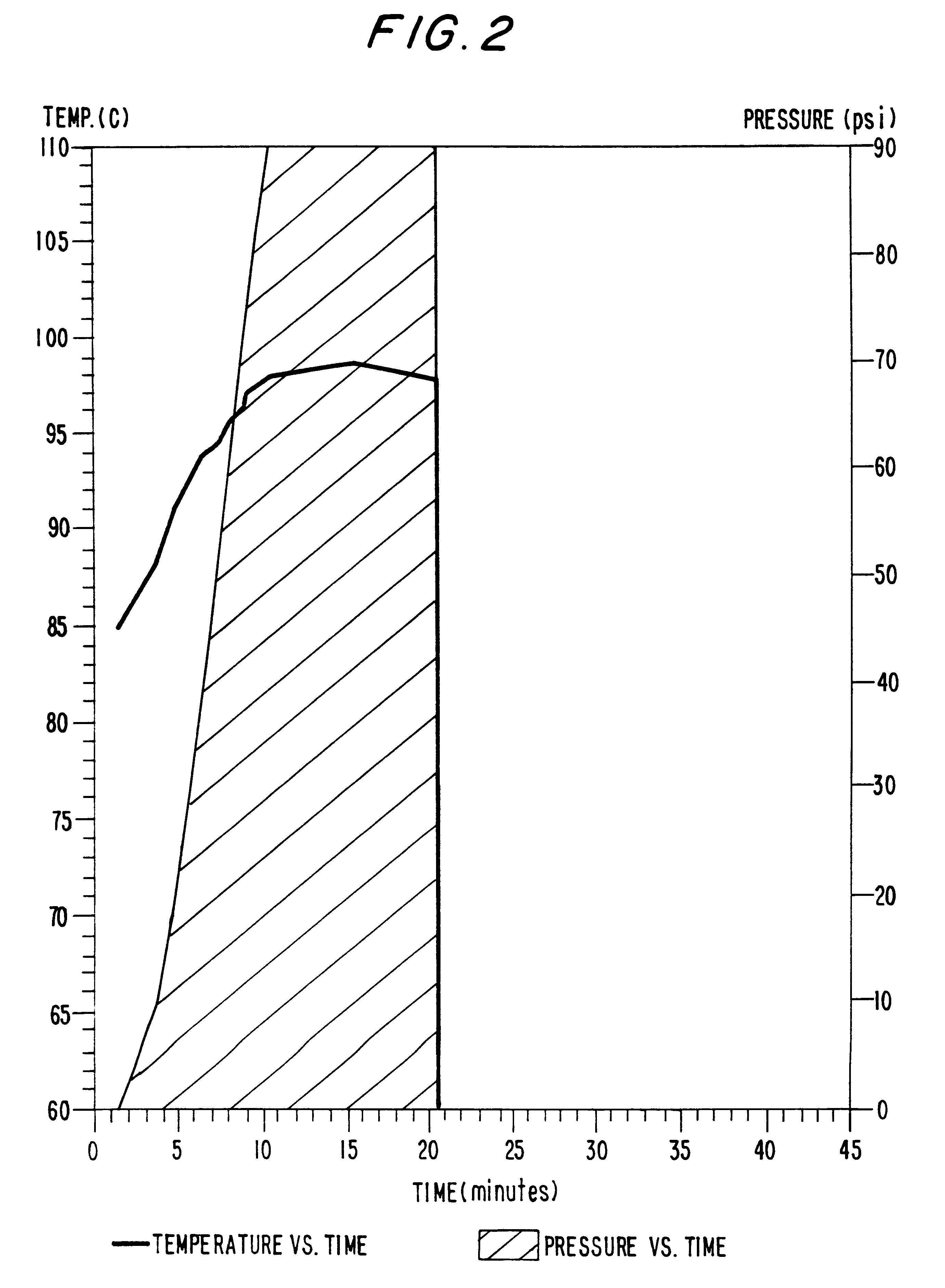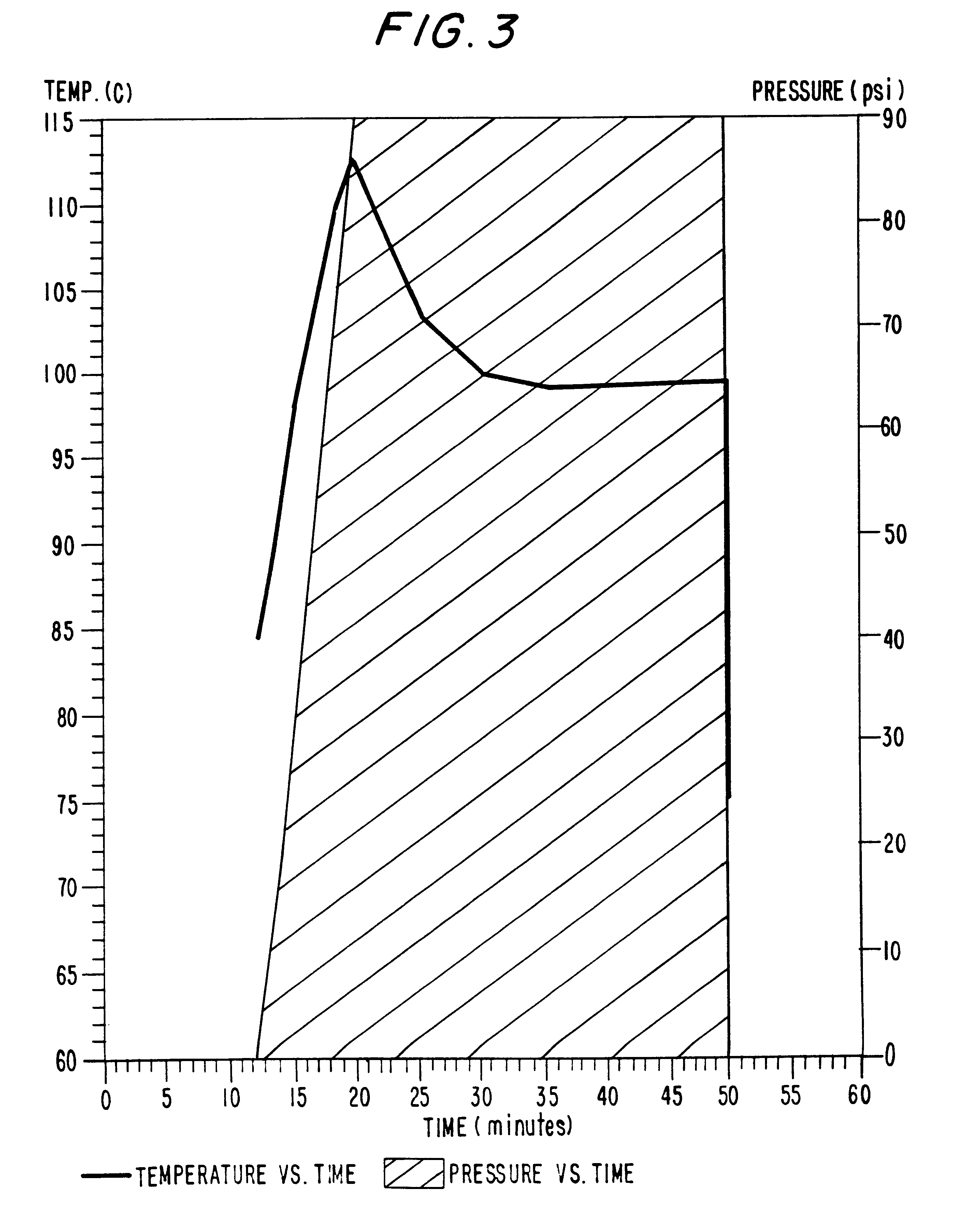High temperature/ultra high pressure sterilization of foods
a high-pressure sterilization and food technology, applied in the field of high-temperature/ultra-high-pressure sterilization of foods, can solve the problems of only effective uhp process, poor efficiency of uhp, limited commercial treatment to high-acid food sterilization or low-acid food pasteurization, etc., to achieve the effect of improving efficiency, reducing the number of uhp
- Summary
- Abstract
- Description
- Claims
- Application Information
AI Technical Summary
Benefits of technology
Problems solved by technology
Method used
Image
Examples
example 1
Fifty gram quantities of raw meat emulsion were individually weighed into each of four test pouches (heat sealable plastic pouches) per each UHP precondition / process evaluated. Pre-pressurized temperatures of up to and greater than 80.degree. C. and pressures of up to and greater than 120,000 psi were used. The purpose of this study was to evaluate the effect of various additives such as surfactants, sodium chloride, and chelating agents (EDTA). A Bacillus subtilis spore strip was individually placed into each of 2 pouches per precondition / process prior to sealing to determine sporicidal activity. All pouches were stored on ice for 24 hours prior to processing.
All samples were stored under refrigeration (4.degree. C.) after processing. The pouches containing spore strips were analyzed for total aerobic and anaerobic count, total aerobic and anaerobic spores, fecal Streptococci, yeast / mold, and Clostridia B. subtilis spore counts. The data was obtained by enumerating survivors on the...
example 2
Thirty seven test variations were evaluated. The testing used a media control system with the spores contained in a phosphate buffer. This enabled the evaluation of the effects of the processing conditions on the spores without any variation due to the influence of other substances. This included multi-staged pressurization, sample pre-conditioning and incorporation of chemical agents (15 evaluated) to enhance pressure effects. Various processing parameters including (a) pressures of 100 Kpsi and pre-pressurized temperatures of 100.degree. C. for 1 minute, (b) multistage pressurization using pressures of 7,500 and 60,000 (consecutive 10 minute exposures to each pressure) and (c) pressures of 120 Kpsi with a pre-pressurized temperature of 80.degree. C. for 1 minute. Three individual pouches, containing 1 B. subtilis spore strip each, were exposed per treatment (process varied and / or chemicals added). After processing, the pouches were stored under refrigeration until assayed for surv...
example 3
Thirty gram quantities of raw, emulsified meat were individually weighed into plastic heat sealable pouches followed by inoculation with a mixed spore culture (Clostridium sporogenes, Bacillus subtilis and Bacillus stearothermophilus). A raw uninoculated set of the same meat served as a control. The inoculation procedure was repeated using presterilized material. All bags were heat sealed following inoculation, then stored on ice until pascalized.
The samples and processing chamber were preconditioned to temperatures of 75.degree. C., 85.degree. C. or 95.degree. C. prior to pascalization at 90 Kpsi. Three samples from both the raw and presterilized group were evaluated per process conditions. The samples were exposed to each temperature / pressure combination for up to 30 minutes. Following pascalization, the samples were stored on ice until evaluated for surviving microorganisms. However, visual inspection of the heat seals demonstrated that they failed during processing and hermetic ...
PUM
 Login to View More
Login to View More Abstract
Description
Claims
Application Information
 Login to View More
Login to View More - R&D
- Intellectual Property
- Life Sciences
- Materials
- Tech Scout
- Unparalleled Data Quality
- Higher Quality Content
- 60% Fewer Hallucinations
Browse by: Latest US Patents, China's latest patents, Technical Efficacy Thesaurus, Application Domain, Technology Topic, Popular Technical Reports.
© 2025 PatSnap. All rights reserved.Legal|Privacy policy|Modern Slavery Act Transparency Statement|Sitemap|About US| Contact US: help@patsnap.com



